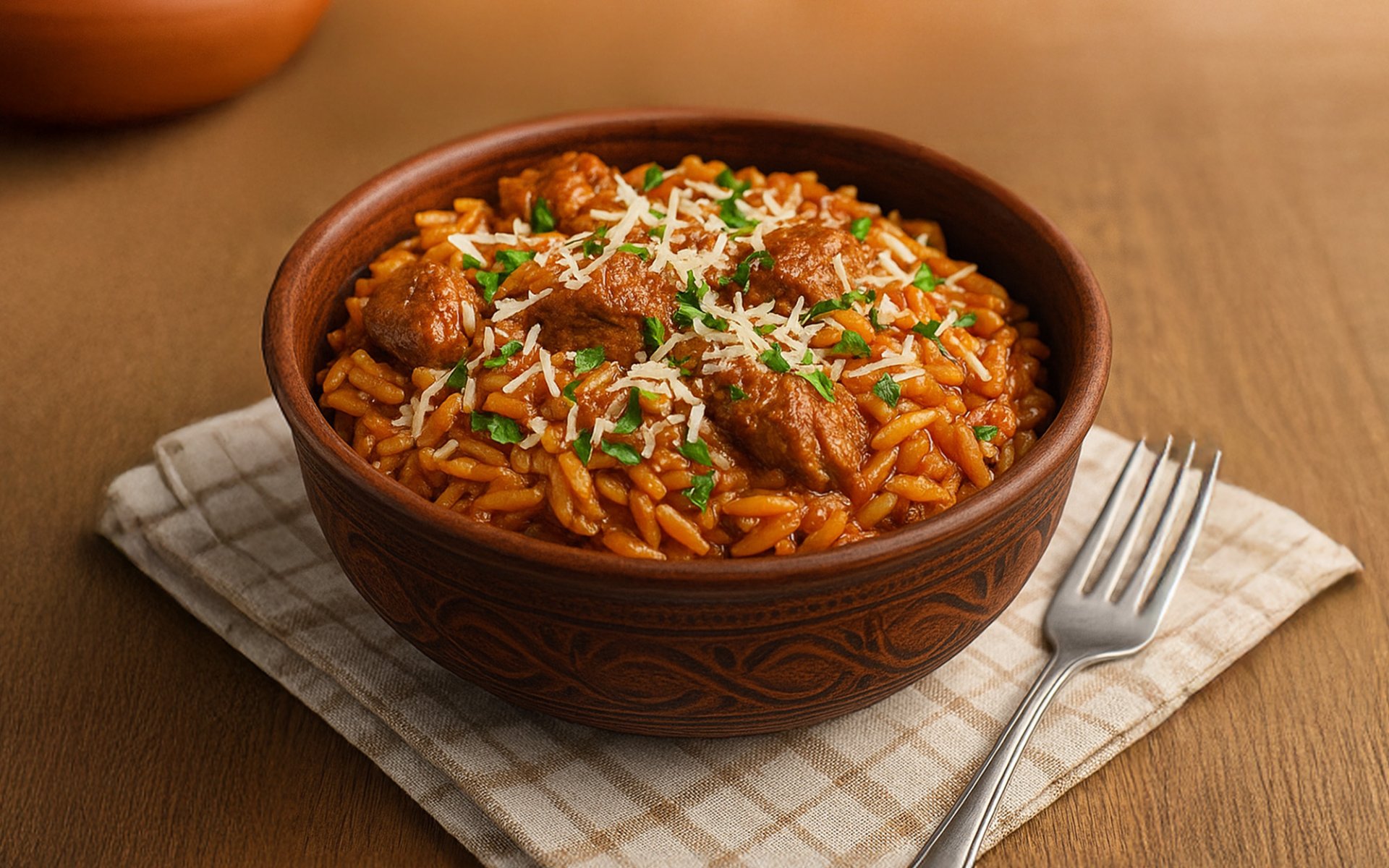Giouvetsi

Giouvetsi , or γιουβέτσι in Greek, is a beloved traditional dish of Greece that reflects the countrys lifestyle, culinary values, and deep Mediterranean roots. This comforting one-pot meal is made with meat, pasta, and spices, slow-cooked in clay pots, following the ancient customs of Mediterranean cooking.
Ancient Origins and Cultural Influence
The history of Giouvetsi can be traced back to Mesopotamian cooking traditions, where clay pots were commonly used for preparing stews. Archaeological and historical records from Mesopotamia detail the early use of clay cookware for long-simmered meals.
Later, this culinary tradition influenced the Ottoman Empire, which borrowed and developed stew-based recipes and spread them across its vast territories including the Balkans and Greece. Among these traditions was the dish known as Güveç, a slow-cooked stew made in a ceramic pot, which heavily inspired what would eventually become Giouvetsi in Greece.
The word Güveç originally referred to the clay pot itself, but it also came to denote the style of dish cooked within it. As the technique traveled across the Ottoman Empire, the name and recipe evolved: in Bulgaria, it became Djuvec; in Romania, Ghiveci; and in Greece, Giouvetsi.
From Güveç to Giouvetsi: The Greek Transformation
When the concept of Güveç arrived in Greece, local cooks adapted the recipe to reflect their culinary preferences and available ingredients. The key difference is the addition of pasta typically not found in the original Güveç. In Giouvetsi, the dish is prepared with meat (usually beef, veal, lamb, or chicken) and a rich tomato-based sauce, combined with traditional Greek pasta.
Popular pasta types used include:
- Risoni or Orzo (Kritharaki) a rice-shaped pasta
- Hilopites small square egg pasta
- Gogges traditional Greek pasta made without eggs
The sauce is often flavored with tomatoes, onions, garlic, beef broth, red wine, and warm spices such as allspice, cinnamon, cloves, and bay leaves. The use of red wine highlights the European influence in the dish, while the slow-cooking method in clay pots preserves the Ottoman style.
Cooking Vessel: The Greek Gastra
A unique characteristic of Giouvetsi is its traditional cooking vessel called a Gastra (Γάστρα) a handmade, low-fire clay pot passed down through generations in Greek villages. These pots are made from local clay, shaped by hand or wheel, then partially dried, smoothed, glazed, and fired. Their unglazed interiors and thick walls distribute heat evenly, making them ideal for slow-cooked meals.
This method allows the meat to become incredibly tender, while the pasta absorbs the sauce, resulting in a dish that is deeply flavorful and aromatic. Before serving, Giouvetsi is traditionally topped with Greek cheeses like Kefalotyri or Mizithra, adding a salty richness.
Regional Variations and Modern-Day Popularity
Across Greece, regional variations of Giouvetsi add local flair:
- On Kefalonia Island, a version called Sofigado is made with rabbit meat
- In Cyprus, a variation includes béchamel sauce with cheese and is often vegetarian, excluding meat altogether
Though the dish requires time and patience, many Greek families continue to prepare Giouvetsi at home, especially for Sunday lunches and special occasions. In restaurants, traditional tavernas still cook Giouvetsi in clay pots to preserve authenticity and flavor, honoring the past while embracing the present.


